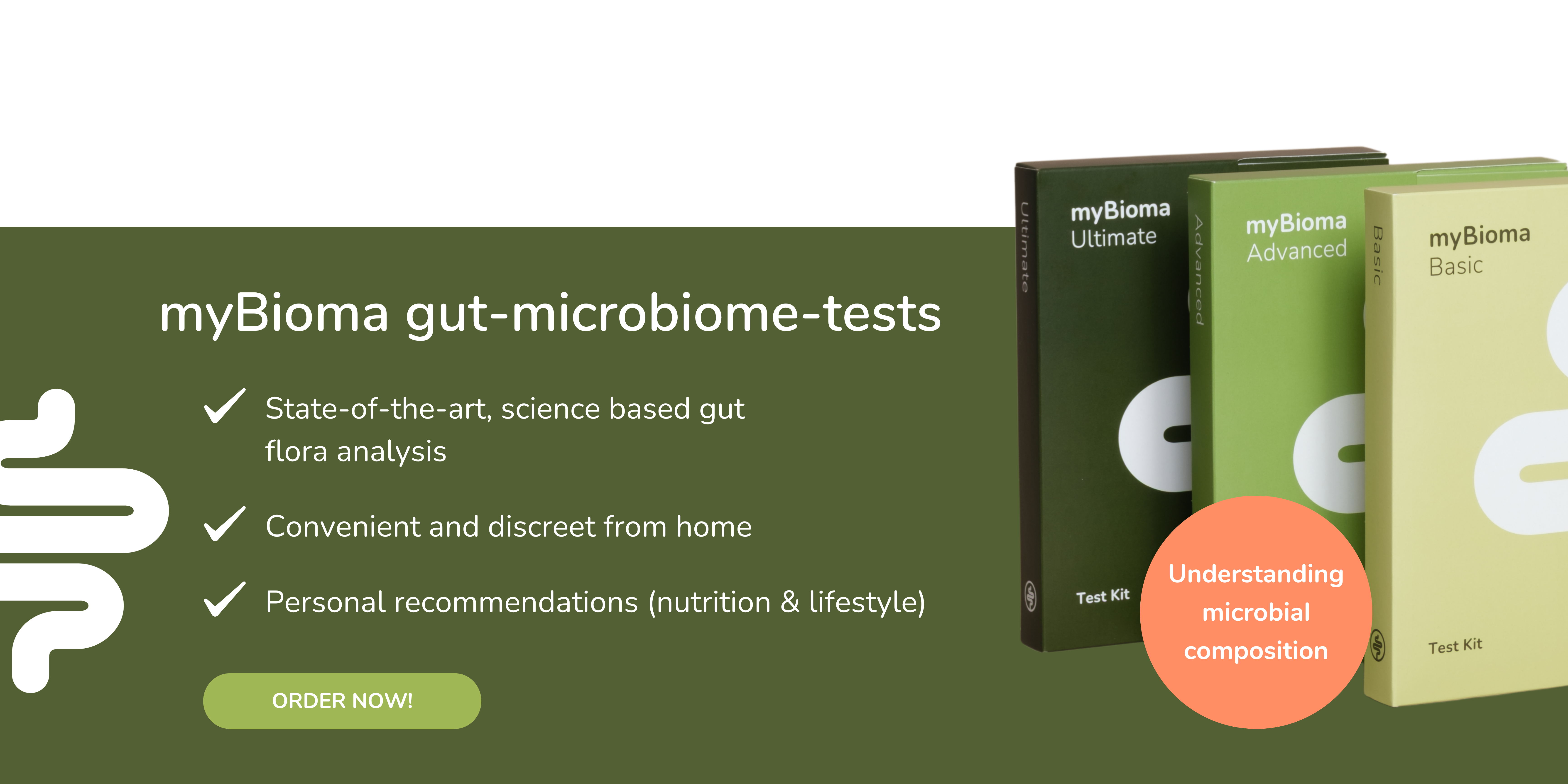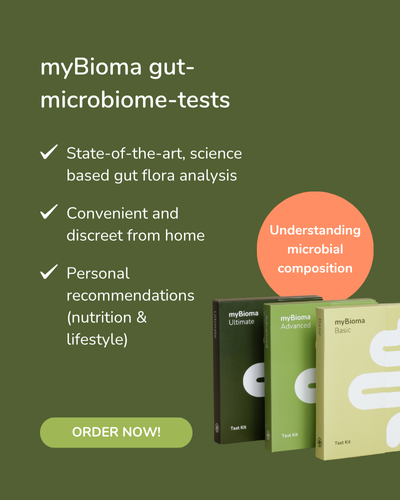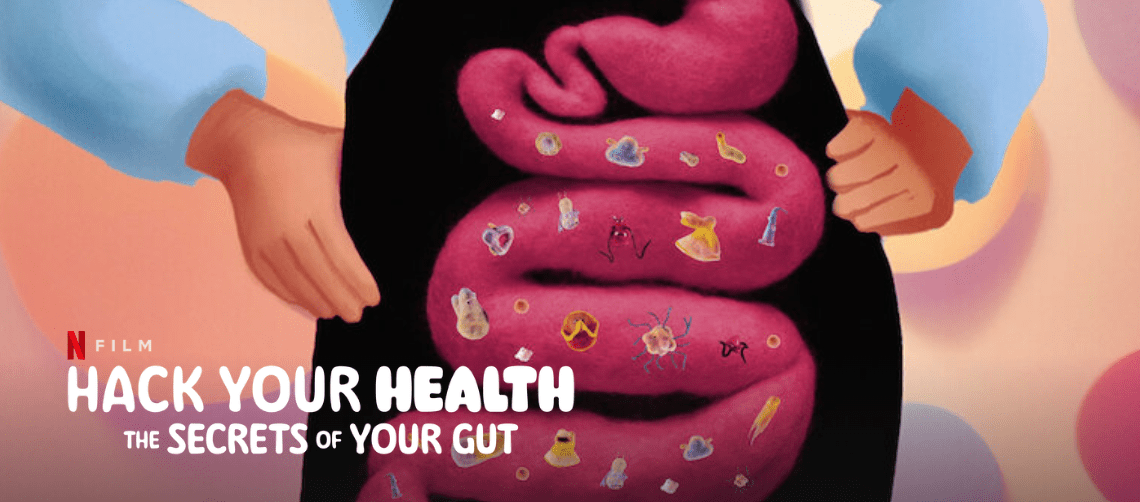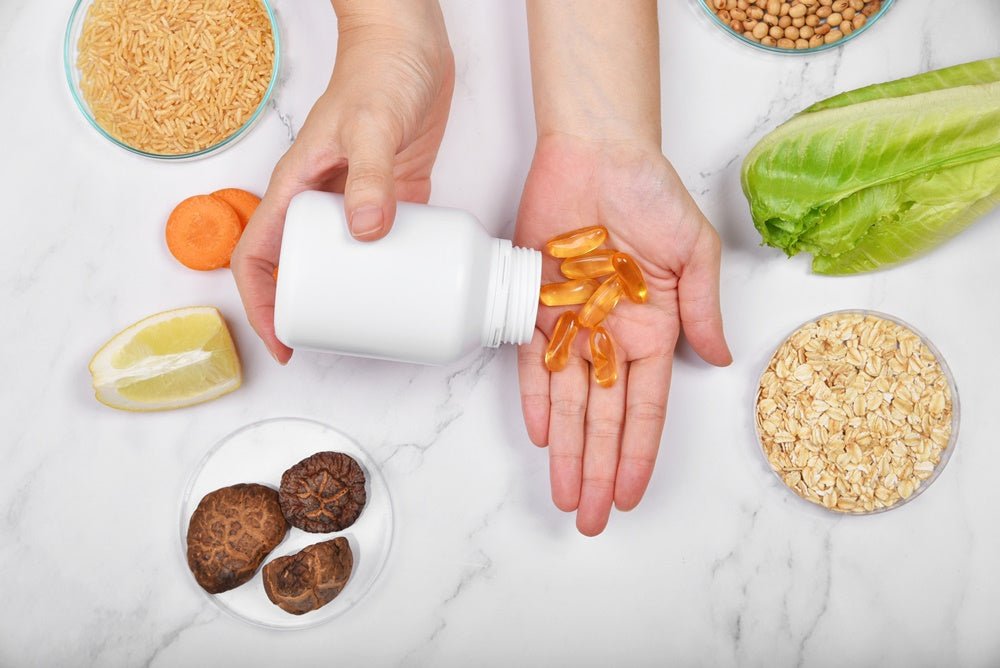Table of contents
- 1. 10 x more bacteria than cells
- 2. The intestinal flora consists of bacteria
- 3. The perfect microbiome
- 4. Genetics is the most important factor
- 5. Antibiotics make you fat
- 6. Probiotics are the solution
- 7. The microbiome is to blame for every disease
- 8. Dietary fiber is always the solution
- 9. The more hygienic, the better
- 10. Similarities only within the species
"We are more bacteria than human." It's easy to stumble across this statement when you think about the microbiome. But is it actually true? "Antibiotics make you fat" or "Here's the recipe for the perfect gut flora!" The microbiome is at the center of attention: everything in research, nutrition and lifestyle revolves around the bacteria in your gut. There are strange rumors and nobody knows anything about it anymore. We take a closer look at the top 10 and show you what's true and what's fake news!
1. 10 x more bacteria than cells
"Your body consists of 10 times as many bacterial cells as human cells!" This myth has been considered a fact for years, but it is actually a gross miscalculation. In 2015, scientists from the famous Weizmann Institute (Israel) revised the ratio. In reality, an adult consists of around 30 trillion human cells. The number of bacteria, on the other hand, is around 39 trillion cells. The estimated ratio is therefore approximately 1.3 times as many bacteria as human cells. However, these values fluctuate relatively widely and are not constant for anyone. There are a particularly large number of bacteria in the stool - this means that after a bowel movement, human cells may even (temporarily) outnumber bacteria (1).
2. The intestinal flora consists of bacteria
Intestinal flora = bacteria in the intestine. Wrong!
The terms gut flora and microbiome are often used interchangeably.Strictly speaking, the microbiome refers to all genes of microorganisms living in and on the body - including bacteria, but also viruses, fungi and primordial bacteria (archaea).The majority of these microorganisms live in the intestine and are called intestinal flora.However, bacteria actually outnumber their co-inhabitants - they make up around 98% of microorganisms - and are also much better researched (2).
3. The perfect microbiome
Another common belief is that an ideal gut flora exists and (if you try hard enough) you can get it.There are two problems here. On the one hand, no ideal composition of the microbiome has yet been discovered.However, it is known that a diverse microbiome correlates positively with personal health.If you are interested in this, myBioma is the right place for you - click here for more information about our mission!
On the other hand, it is not possible to trim your personal intestinal flora to an exact specification.The structure of the microbiome is subject to many factors.This leads us to the next point...
4. Genetics is the most important factor
In recent decades, it was assumed that genetics was the most important factor for illness or health. We already know today that other things are more decisive, especially when it comes to the microbiome:
Diet plays a central role here, but exercise, stress, lifestyle habits, age and gender are also important.This means that when it comes to gut health in particular, you can take a lot into your own hands and improve your gut flora (3)!

We encounter bacteria in every situation in life, be it when eating, driving, exercising or on the toilet
5. Antibiotics make you fat
Without antibiotics, medicine would never have been able to develop into its current form! However, drugs used to treat bacterial infections are increasingly falling into disrepute: the resistance situation is deteriorating, they are being used incorrectly and now they are also making people fat! Is that really true? Not quite. Antibiotics should be taken with caution and according to medical advice - but there is no need to panic when prescribing them. Antibiotics do not actually lead to weight gain. In fact, frequent use during childhood can change the intestinal flora in the long term. Antibiotics not only kill off the pathogenic bacteria, but also the "good" intestinal bacteria. As long as this doesn't happen too often, it's not too bad. It is only when antibiotics are used for too long that the intestinal flora does not develop normally. The altered microbiome then causes a higher risk of obesity. Conclusion: Don't demonize antibiotics, but use them with caution (4)!
6. Probiotics are the solution
This brings us straight to the next myth: after destroying the intestinal flora, wouldn't the best solution be to replace it in pill form?This approach already exists: probiotics are living bacteria that can be bought in powder or tablet form from the pharmacy.The "out at the bottom, back in at the top" approach is not entirely wrong.However, probiotics do not contain the same bacteria that are lost through antibiotics.After treatment, the microbiome tends to return to its original state.However, if a probiotic is taken during this recovery phase, the foreign bacteria can interfere with this normalization process (5).However, some studies have also shown that probiotics can have a positive effect on intestinal health while taking antibiotics.Probiotics can also bring about improvements in depression, poor concentration and irritable bowel syndrome.The bottom line is that the issue of taking probiotics is far from settled.The positive effect of probiotics has been scientifically proven in many situations.In some situations, the study situation is insufficient and conclusions can therefore not be drawn (6).

Discuss the use of probiotics after antibiotics with a nutritionist.
7. The microbiome is to blame for every disease
The list of diseases associated with an altered microbiome is getting longer and longer. Diseases such as rheumatism, atherosclerosis, Alzheimer's (dementia) or multiple sclerosis are mentioned in the same sentence as gut flora. But are the bacteria in the gut really to blame for everything? Probably not. The microbiome is altered by many things: Smoking, obesity, genetics, diet, etc. These changes in the microbiome could either make you ill or only occur as a result of illness. So we are faced with the famous chicken or egg question. However, one thing is certain: we cannot always simply blame illness on the intestinal flora.
8. Dietary fiber is always the solution
A popular way to achieve healthy intestinal flora is to change your diet - and there is good reason for this. Tip number 1 for a diverse and therefore healthy microbiome is to eat more fiber. This is also true - at least for healthy people. However, for people with abdominal problems, such as irritable bowel syndrome or chronic inflammatory bowel disease, fiber can worsen the problems. Complaints such as diarrhea and abdominal pain are the main symptoms here. Food that is difficult to digest - i.e. with a lot of fiber - is counterproductive here. Find out more about the right diet for intestinal flora here!

Dietary fibre - food for beneficial bacteria. However, if you have digestive problems, these plant fibres can increase discomfort.
9. The more hygienic, the better
The cleaner it is, the better? No! The fact that garbage and dirt make us ill is deeply rooted in our minds. Of course, this is justified because a lack of hygiene contributes to the transmission of diseases. However, the western world has gone too far. Studies have shown that constant washing and cleaning destroys the healthy bacterial flora on our skin and in our intestines, depleting our environment of beneficial bacteria. This leaves room for real pathogens and makes us more susceptible. Children who grow up in "over-hygienic" conditions are also prone to allergies and autoimmune diseases. This is because their immune system has not been sufficiently trained with harmless bacteria and therefore overreacts quickly (7).
10. Similarities only within the species
Anyone who believes that bacteria know the boundaries between species is mistaken! In fact, the two intestinal flora of a dog and its owner are more similar than those of two strangers. By sharing a household, dogs and owners exchange their bacteria to a much greater extent - which incidentally brings a health benefit! The microbiome becomes more diverse and the immune system is better trained. Pets are therefore highly recommended (8).
References
- Sender, R., Fuchs, S. &Milo, R. Preprint on bioRxiv http://dx.doi.org/10.1101/036103 (2015).
- Qin J, Li R, Raes J, et al. A human gut microbial gene catalogue established by metagenomics sequencing. Nature. 2010; 464(7285):59-65.
- Rothschild D,Weissbrod O, Barkan E, et al. Nature.2018.
- Cox LM, Blaser MJ. Nat Rev Endocrinol. 2015;11(3):182-90.
- Suez J, Zmora N, Zilberman-schapira G, et al. Cell. 2018;174(6):1406-1423.e16.
- Shen NT, Maw A, Tmanova LL, et al. Gastroenterology. 2017;152(8):1889-1900.e9.
- Vandegrift R, Bateman AC, Siemens KN, et al. Microbiome. 2017;5(1):76.
- Song SJ, Lauber C, Costello EK, et al. Elife. 2013;2:e00458.








